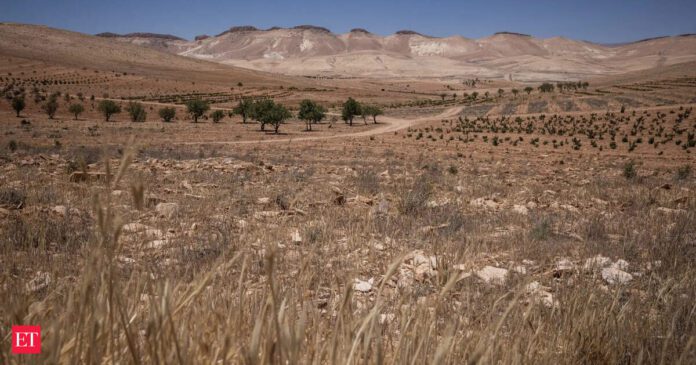The findings, published in Science Advances by researchers led by Hrishikesh Chandanpurkar of FLAME University, India, show that vast amounts of terrestrial water are draining into the oceans, tilting the global water balance in unprecedented ways.
Satellite data tracks a drying planet
Using two decades of satellite measurements from NASA’s Gravity Recovery and Climate Experiment (GRACE) and its follow-on mission, the team reconstructed how Earth’s terrestrial water storage has shifted since 2002.
The results are stark: continental areas experiencing drying are expanding by an area nearly twice the size of California every year. In contrast, wet areas are not growing fast enough to compensate.
“Dry areas are drying faster than wet areas are wetting,” the researchers write, warning that the shift is both accelerating and widening.
Where the water is going
The analysis found that much of the missing water has ended up in the oceans, where it is now adding more to sea level rise than the planet’s ice sheets.Losses were especially pronounced in high-latitude regions like Canada and Russia, where melting permafrost and ice are releasing stored water. In non-glacial regions, up to 68 percent of the decline is tied directly to human groundwater depletion.
The reason: Human pressure on groundwater
Across many continents, agriculture remains the biggest driver of groundwater loss. California’s Central Valley, which supplies 70 percent of the world’s almonds, and cotton-growing regions around the former Aral Sea in Central Asia are among the worst affected.
With rainfall patterns becoming increasingly erratic due to fossil fuel-driven climate change, communities are drawing heavily on aquifers. But these deep water reserves are not replenishing nearly as quickly as they are drained.
“At present, overpumping groundwater is the largest contributor to terrestrial water storage decline,” the study notes, amplifying the risks from heatwaves, droughts, and desertification.
The net result is a “double jeopardy”: continents are losing the freshwater resources that billions depend on, while oceans rise faster and swallow coastlines. Three out of every four people already live in countries where freshwater loss is worsening.
In England, for instance, 2025 was declared the driest spring in 132 years, with water reservoirs running so low that centuries-old structures, like an ancient packhorse bridge, resurfaced.
The warning
The authors stress that safeguarding groundwater must become a global priority. Even if slowing climate change remains politically fraught, policies to conserve and sustainably manage groundwater can be enacted now.
“Protecting the world’s groundwater supply is paramount in a warming world and on continents that we now know are drying,” they conclude.

